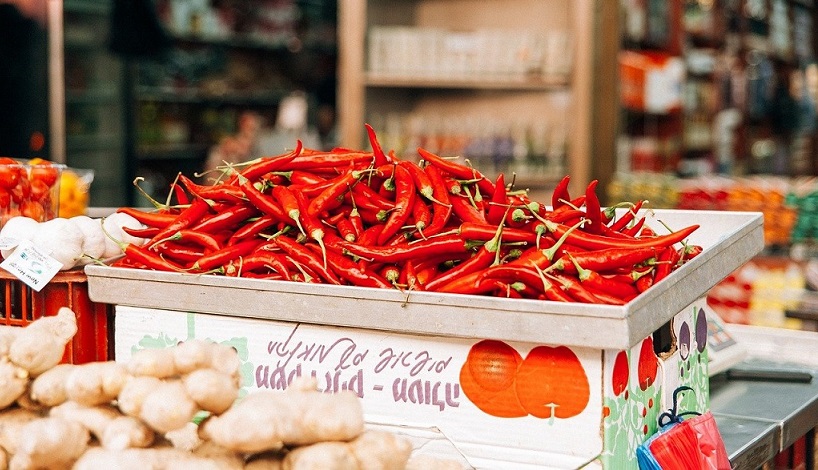What do you think the reasons that we eat spicy food for. It has long been thought that spicy food was consumed in warmer climates to prevent infections from spoiled food, but a recent study has just debunked this theory. Why do we eat spicy food then?
Tabasco, curry, chilli, ginger, wasabi … In recent years, spicy food has become international and you don’t need to travel by plane to enjoy dishes from Peru, Mexico, Thailand or India. But what is it that led human beings to become fond of this tasty suffering?
Researchers at the Australian National University have wondered why hot countries around the world tend to eat spicy food. Until now, the common belief was that hot spices could have an antimicrobial effect and protect against foodborne infections in hot countries, where they are more common.
However, after examining more than 33,000 recipes from 70 different cuisines and 90 spices and comparing them with socioeconomic and environmental factors, scientists have found no relationship between spicy use and infections, and it does not appear to be related to weather or spices. available. Their results have been published in the journal Nature Human Behavior.
The forgotten sense of taste
Professor Harry Lawless, who specializes in sensory evaluation of food, described spiciness in 1989 as “the forgotten sense of taste ” Already then, one in four people in the world ate hot peppers.
The hot peppers known as chillies or chili peppers are one of the most widely used condiments in the world. The active ingredient that produces the stinging sensation is called capsaicin, a substance that stimulates the temperature receptors in the skin, causing a burning sensation in the mouth.
In addition, there are other recognized health benefits of hot peppers. Capsaicin raises the levels of “good” cholesterol, and reduces the risk of cardiovascular disease. Although it can also produce burning sensations in the stomach, which in general have no major consequence.
In the Australian study, in addition to analyzing the use of common spices, such as pepper or cinnamon, other less well-known ones were also studied, such as St. John’s wort, present in Europe and Asia, or epazote, common in Latin American countries.
Spicy and Darwinian Gastronomy
This study raises a fundamental question in science: the difference between cultural correlation and causality. One of the theories about spicy is the so-called Darwinian gastronomy. This theory states that our culinary preferences and the use of spices are due to an adaptation of our stomach to our natural environment.
Plants have chemical defenses against bacteria, fungi or insects in the form of oxidizing substances present mainly in their peels or fruits, which are precisely those that humans use as spices. According to Darwinian Gastronomy, we take these spices because our organism evolves along with plants, borrowing their defenses to protect our digestive system. Thus, it seems easy to establish a causal relationship between hot countries, where there are higher levels of disease, and the consumption of spices, compared to colder countries that tend to use less spices.
However, the team of researchers from the Australian National University defines a spice as “an ingredient that is added to a dish in relatively small amounts, mainly for its taste, color or smell, rather than for its volume, nutrition or pharmaceutical effects” . The use of spices seems to have to do with culture and health, rather than with climate or evolution.
Do we eat spicy food just for the taste?

Researchers have performed statistical analyzes with recipes from different regions of China, Japan, the Caribbean and, in Europe, Germany, Austria and Switzerland, along with a number of socio-economic and environmental factors.
The results confirm that kitchens in places with a warmer climate have more spices in their recipes. However, they have not found a relationship between spices and reduced risk of infection from food.
The consumption of spicy to reduce infections is not sustained because in these regions other additives with antimicrobial effect, such as alcohol or vinegar, are not used, although they are available.
The climate, human population density or cultural diversity do not explain the consumption of spicier foods, according to the authors. Biodiversity, the number of crops, or the amount of different spices that grow naturally in each area are also unrelated to their use.
However, there is a relationship with other factors such as poverty and the low availability and diversity of food. If all you can eat is rice or cassava, extremely bland foods, it is more interesting to season them with the available spices. In addition, the spicy produces a feeling of fullness, which can also help when food is scarce.
Researchers believe that in the future it will be essential to develop more sophisticated ways of analyzing these cultural questions in order to find a more precise answer without falling into prejudices or assumptions.
And you, why do you eat spicy food?
Also Read | Reasons why the poor people are perceived to be poor, we tend to believe that they do not deserve our help
